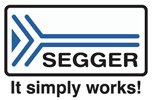SEGGER Microcontroller

SEGGER Microcontroller GmbH has three decades of experience in Embedded Systems, producing cutting-edge RTOS and Software Libraries, J-Link and J-Trace debug and trace probes, a line of Flasher In-System Programmers and software development tools.
SEGGER's all-in-one solution emPower OS provides an RTOS plus a complete spectrum of software libraries including communication, security, data compression and storage, user interface software and more. Using emPower OS gives developers a head start, benefiting from decades of experience in the industry. SEGGER's professional embedded development software and tools are simple in design, optimized for embedded systems, and support the entire embedded system development process through affordable, high-quality, flexible and easy-to-use tools. The company was founded by Rolf Segger in 1992, is privately held, and is growing steadily. SEGGER also has a U.S. office in the Boston area and branch operations in Silicon Valley, Shanghai and the UK, plus distributors on most continents, making SEGGER’s full product range available worldwide. For more information on SEGGER, please visit www.segger.com.

